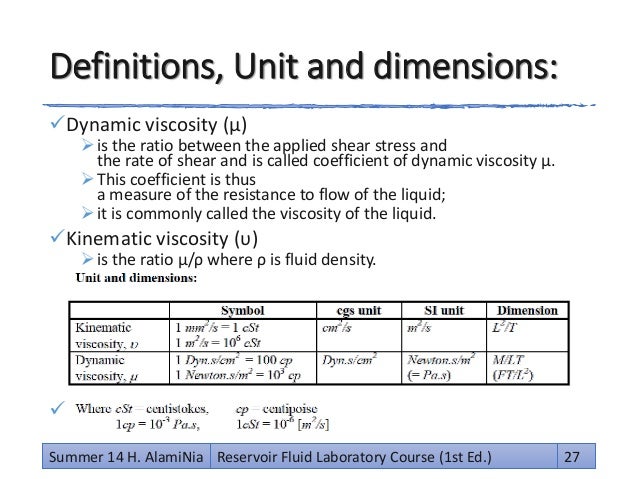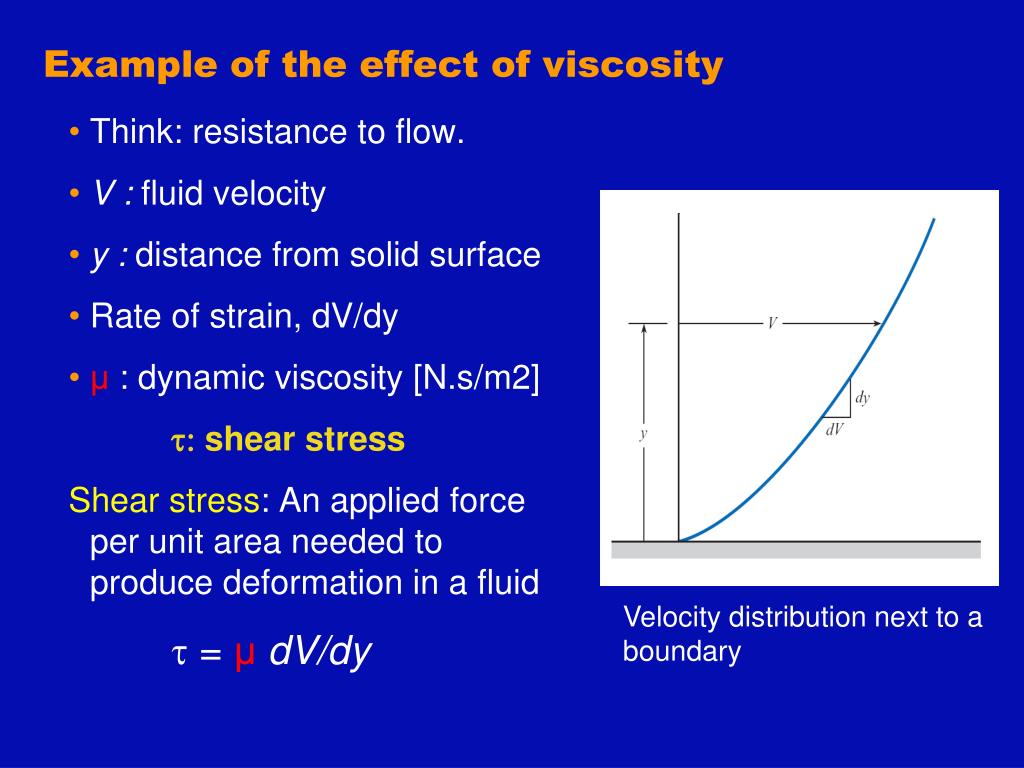

Gas is an example of a fluid with low viscosity. Fluids, such as water and mercury, exhibit a drop in kinematic viscosity with an increase in temperature. Kinematic viscosity variations seen in liquids and gases are entirely different. The SI unit of kinematic viscosity is m2/s. Two different fluids can have the same dynamic viscosity, but never the same kinematic viscosity. Since there is a difference in density, the kinematic viscosity of the fluids will be different. In such cases, the determination of kinematic viscosity helps in distinguishing between the fluids. In certain cases, you may analyze two different fluids with the same absolute viscosity. The kinematic viscosity (v) is determined by the ratio of absolute viscosity to density (). Kinematic viscosity is also called the diffusivity of momentum. The relationship between the absolute viscosity and the fluid’s mass density can be given by the kinematic viscosity. Note that is the dynamic viscosity, is the shearing stress in the fluid, y is the shear rate, and the SI units of dynamic viscosity are N s/m2, Pa s, and kg/m s. Dynamic viscosity can be defined as the tangential force per unit area required to slide a horizontal plane, which is at a unit distance from the neighboring plane at unit velocity.ĭynamic viscosity can be given by the equation: The dynamic or absolute viscosity, otherwise called the coefficient of absolute viscosity, is the measure of internal resistance exerted by the fluids. The viscosity of fluids can be expressed in two ways. As the viscosity decreases, the fluid has less shear resistance. Highly viscous fluids show high resistance to flow, such as molasses. When fluid layers attempt to move over each other, intermolecular friction is exerted, producing shear resistance in the fluid to initiate a motion or deformation. Viscosity gives the measure of the fluid’s resistance to gradual deformation by tensile stress or shear stress. To analyze the behavior of the fluid and how it interacts with solid boundaries, viscosity is utilized. In these applications, the fluid may be in motion or at rest. In daily life, we encounter several applications where fluid is involved. In this article, we will explore viscosity, with a focus on the kinematic viscosity of fluids, gases, and air.

For example, the kinematic viscosity of air can be determined if the dynamic viscosity and density are known. The viscosity can be described using dynamic viscosity or kinematic viscosity. Viscosity is an important property of fluids. The shape and speed of the bullet, the mass of gas displaced by the bullet, the compressibility of air, and the viscosity of air are all factors that influence the aerodynamic forces generated. The magnitude of the aerodynamic forces generated depends on the properties of the air and the bullet.

We see the air near the bullet become disturbed and move around the bullet, and there are aerodynamic forces generated between the air and the bullet. Imagine a slow-motion video of a bullet passing through the air. Viscosity is an important property of fluids The kinematic viscosity of air at 15℃ is 1.48 x 10-5 m2/s or 14.8 cSt. Two different fluids can have the same absolute or dynamic viscosity, but never the same kinematic viscosity.


 0 kommentar(er)
0 kommentar(er)
